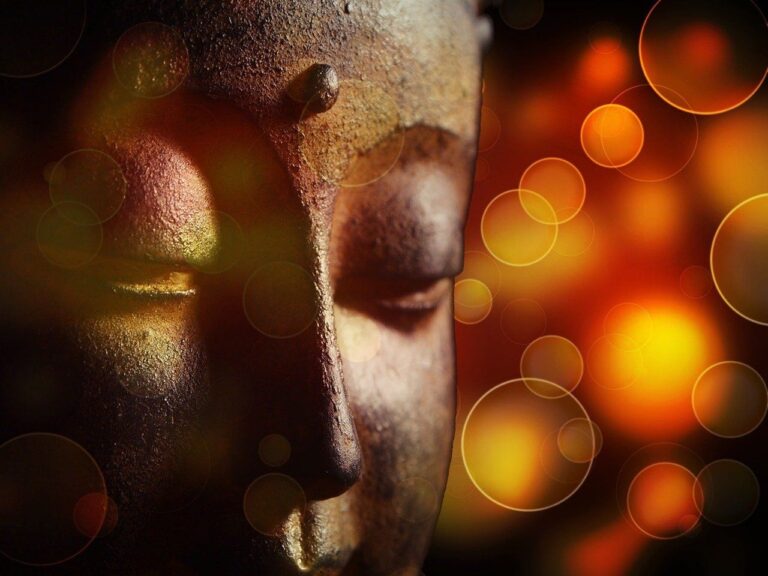Concentration
In the Buddhist tradition of meditation, concentration is an essential tool for exploring and penetrating deeply into your own psyche. Without unwavering attention, the realizations and insights from meditation are fleeting and difficult to retain.
To really look deeply into yourself you need refined attention to experience the extremely subtle phenomena of the mind and consciousness. Concentration is the tool meditators use to understand themselves.
Alan Wallace, a world leader in Shamata (concentration meditation), says:
“I propose that if you could direct your attention as you see fit, you could actually choose the universe in which you appear to live.”
Attentional stability or concentration can be easy and natural and a means of tapping into our creative genius.
‘Geniuses of all kinds excel in their capacity for sustained voluntary attention. Just think of the world’s greatest musicians, mathematicians, scientists and philosophers throughout history; it appears that they all have an extraordinary ability to focus their attention with a high degree of clarity for long periods of time.” ~ William James
But in our fast-paced modern world, where the media is constantly trying to capture our concentration, this has suffered so much that some doctors are calling ADHD an epidemic.
Could meditation be an alternative to pharmaceutical interventions and the safe way to develop attentional stability, overcome mental imbalances and create the life you want to create?
Here are 7 ways you can improve your concentration
1) Not too tight, not too loose.
The Buddha described perfect concentration as that of a guitar string; he said it shouldn’t be too tight or too loose to play the perfect note. Our attention should not be too forced or tense, nor too weak or vague. The perfect balance between effort and relaxation is required to find that sweet spot of clear and relaxed understanding of your meditation object.
2) Start with short periods of meditation.
Quality is better than quantity when it comes to meditation. 5 minutes of clear and focused attention is much more useful than an hour of daydreaming. I recommend starting with just two minutes. Set a timer and sit quietly for two minutes, paying attention to your breathing, observing sensations in your body, or mentally repeating a mantra. In fact, being able to clearly observe your meditation object for a few seconds is the beginning of a concentration training that can be built upon and improved upon over time.
3) Let go of distractions. It’s not that you can’t concentrate, it’s just that you’re too distracted by your thoughts. Everyone has the ability to concentrate once the mind has given up its obsession with thoughts. Learning to focus and concentrate is less about the ability to concentrate itself, and more about letting go of thoughts as they arise, without following or engaging with them. One way to do this is to make it clear that during meditation all thoughts are JUST THOUGHTS, neither good nor bad, boring or exciting. You level all the thoughts so that they are exactly the same and no matter how tempting the thought, idea or plan may be, you let it go and return to your object. Just say no thank you to your thoughts and they will resolve themselves.
4) Be confident. Any worthwhile effort requires trust in yourself. Trust that you have the potential to develop your attention and give up distractions. This also requires some enthusiasm and enjoyment in the meditation practice, which can come from reading and learning about meditation and all the benefits of meditation. Self-confidence arises when you set realistic goals for yourself and achieve them. That’s where starting with short periods comes into play. You will gain confidence by meditating for just 1 or 2 minutes with focus on your object and know that you can improve little by little every week.
5) Introspection. It’s not so much getting distracted that’s the problem, because that’s bound to happen to any person who tries meditation. It’s not knowing you’re being distracted that causes problems, which is where you find yourself in a daydream for 30 minutes during meditation without even realizing it.
It’s like you have your own inner meditation teacher watching over you and every time you wonder, you are gently asked to bring your attention back to the object. This can be an obvious distraction, such as losing focus and preoccupied with thoughts, but as your meditative skills deepen, there are subtle distractions that are not so obvious and you have well refined introspection skills are needed to know if there are distractions. present or not.
6) Learn to let go of the technique.
This relates to the first tip about a balanced and even state of attention. To relax and let your attention rest calmly and clearly on the object, you need to stop adjusting and let it happen. You can overcorrect and try too hard; the skill is to be relaxed and alert to your object. This allows for the practice of meditation, which allows your attention to simply focus on the object in a natural and unforced way.
7) Add lots of small moments of meditation into your day.
Finally, to support your concentration training, it is crucial that you practice mindfulness regularly throughout the day. This means taking several moments of meditation by consciously breathing and putting aside thoughts several times a day. At a red light in the car, in line at the supermarket or even while sitting on the toilet. One meditation master recommends many short sessions many times throughout the day. Ultimately, these sessions flow into each other and your day can become one conscious and mindful day full of focus and clarity.
Written by Chad Foreman
to gradually guide people from the basic principles of mindfulness and relaxation to profound states of consciousness.

